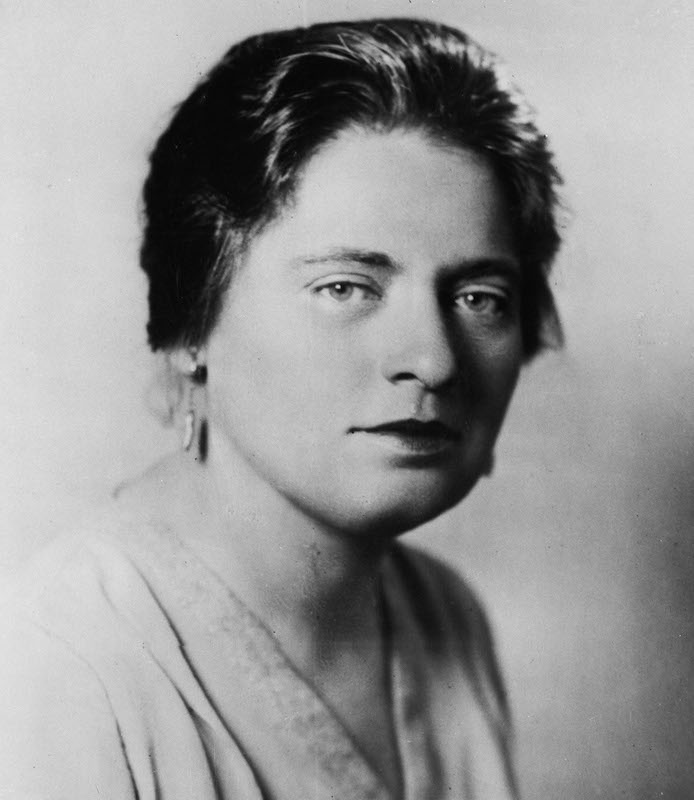
This piece is part of an ongoing series on the unsung women of history. Read more here.
Journalist Lorena Hickok, known as “Hick,” is best remembered today for her intimate, not-quite-definable friendship with Eleanor Roosevelt. For a few years in the early 1930s, the two women were so close that Hickok had to quit her job reporting on the Roosevelt Administration, and instead, join it, as a New Deal researcher. Her dispatches from the darkest corners of the Depression-ravaged country played a crucial role in the government’s relief efforts – and gave Hickok a disturbing insight into the kind of poverty she herself had narrowly escaped.
Hick was a wry nickname for a girl from the sticks, born into a poor and unstable family in rural Wisconsin in 1893. She escaped her violent father as early as possible, at age 14, when she left home to work as a maid, before a relative came to her rescue and helped her finish high school. College was a failure, so she found a job instead, on the Battle Creek Evening News, back when journalism was a working-class profession that absorbed smart and bold young people who couldn’t afford college, or chafed against its restrictions. She moved on to Milwaukee and then to Minneapolis, where she tried again at college, but left after the school wouldn’t budge on making her live in a women’s dormitory. Instead, she found a mentor at the Tribune, in managing editor Thomas J. Dillon, who taught her not only the rough-and-tumble business of news but also, she later said, “how to drink and how to live.” He gave her assignments far outside the purview of most female journalists, who tended to be trapped in the purgatory of the “society” pages, sending her out to cover politics, news, and sports.
In 1926, Hickok was diagnosed with diabetes, just three years after synthetic insulin had been made widely available as a treatment. (It would be another decade before the disease was divided into type I and type II.) The disease was no longer a death sentence, but it was still debilitating, and it would cramp and disrupt the rest of Hickok’s life. At the time of her diagnosis, Hickok was living in Minneapolis with her long-time partner, a fellow journalist named Ella Morse. According to Eleanor Roosevelt’s biographer Blanche Wiesen Cook, Morse persuaded Hickok to take a year’s leave from the paper and move with her to San Francisco—but, just before they were to leave, Morse eloped with a man. Hickok burned her own bridge and moved to New York, where she worked for the Associated Press and made her name as a dogged and brilliant reporter. Then in 1932, during FDR’s first presidential campaign, she was assigned to cover the candidate’s wife.
Get your history fix in one place: sign up for the weekly TIME History newsletter
Hickok’s path to inner circle of the presidency was as unlikely as Eleanor Roosevelt’s was pre-ordained. Her family’s poverty couldn’t have been further removed from the First Lady’s aristocratic upbringing, but their different childhoods had been equally unhappy. They both bore the scars of long fights to make their voices heard in rooms dominated by men. What began as a professional closeness quickly became a warm friendship, and by FDR’s inauguration in March 1933, they were spending almost every day together. After Hickok’s job took her back to New York, she and Eleanor began to exchange long letters overflowing with declarations like “I ache to hold you close.” In later years, when it were made public, that loving and voluminous correspondence would make their relationship the subject of much debate. But even at the time, it quickly became obvious that the reporter could not cover her subject with any objectivity, and Eleanor urged her to take a job with her husband’s administration. In 1933, the harshest year of the Depression, Hickok went to work for Harry Lloyd Hopkins at the Federal Emergency Relief Administration, and spent the next two years traveling constantly and bearing witness to conditions of shocking misery across the country. In a profile of Hopkins, a TIME journalist characterized Hickok as “a rotund lady with a husky voice, a peremptory manner, baggy clothes”—a description that understandably stung her even through the next sentence calling her “one of the country’s best female newshawks.”
Her diabetes forced Hickok to give up her work with FERA in 1936, and she took a job promoting the 1939 World’s Fair, before moving to Washington, D.C., to work for the Democratic National Committee. For the next five years she lived at the White House, at Eleanor’s invitation, then followed her friend to Hyde Park and a cottage on the Roosevelt estate after FDR’s death. Her sight was damaged, but she continued to write, collaborating with the former First Lady on a collection of profiles of remarkable women, called Ladies of Courage. She wrote several biographies for children and her friend’s life story—tellingly titled Reluctant First Lady.
The precise nature of Hickok’s relationship with Eleanor Roosevelt is the kind of question that’s hard for historians to resist, but it would be a shame for that speculation to overshadow Hickok’s defiant and determined life. The relationship was undoubtedly her most important and sustaining personal bond, but it was matched by her devotion to reporting, and to the New Deal project of helping those who had no voice to help themselves.
More Must-Reads from TIME
- Cybersecurity Experts Are Sounding the Alarm on DOGE
- Meet the 2025 Women of the Year
- The Harsh Truth About Disability Inclusion
- Why Do More Young Adults Have Cancer?
- Colman Domingo Leads With Radical Love
- How to Get Better at Doing Things Alone
- Michelle Zauner Stares Down the Darkness
Contact us at letters@time.com